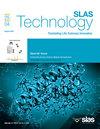Efficient microaneurysm segmentation in retinal images via a lightweight Attention U-Net for early DR diagnosis
IF 3.7
4区 医学
Q3 BIOCHEMICAL RESEARCH METHODS
引用次数: 0
Abstract
Diabetic Retinopathy (DR) is a complication of diabetes that can cause vision impairment and lead to permanent blindness if left undiagnosed. The increasing number of diabetic patients, coupled with a shortage of ophthalmologists, highlights the urgent need for automated screening tools for early DR diagnosis. Among the earliest and most detectable signs of DR are microaneurysms (MAs). However, detecting MAs in fundus images remains challenging due to several factors, including image quality limitations, the subtle appearance of MA features, and the wide variability in color, shape, and texture. To address these challenges, we propose a novel preprocessing pipeline that enhances the overall image quality, facilitating feature learning and improving the detection of subtle MA features in low-quality fundus images. Building on this preprocessing technique, we further develop a lightweight Attention U-Net model that significantly reduces the number of model parameters while achieving superior performance. By incorporating an attention mechanism, the model focuses on the subtle features of MAs, leading to more precise segmentation results. We evaluated our method on the IDRID dataset, achieving a sensitivity of 0.81 and specificity of 0.99, outperforming existing MA segmentation models. To validate its generalizability, we tested it on the E-Ophtha dataset, where it achieved a sensitivity of 0.59 and specificity of 0.99. Despite its lightweight design, our model demonstrates robust performance under challenging conditions such as noise and varying lighting, making it a promising tool for clinical applications and large-scale DR screening.
应用轻型Attention U-Net对视网膜图像进行有效的微动脉瘤分割,用于早期DR诊断
糖尿病视网膜病变(DR)是糖尿病的一种并发症,如果不及时诊断,可导致视力损害并导致永久性失明。糖尿病患者数量的增加,加上眼科医生的短缺,凸显了对早期DR诊断的自动筛查工具的迫切需求。微动脉瘤(MAs)是DR最早和最易检测的症状之一。然而,由于几个因素,包括图像质量限制、MA特征的微妙外观以及颜色、形状和纹理的广泛变化,检测眼底图像中的MAs仍然具有挑战性。为了解决这些挑战,我们提出了一种新的预处理管道,以提高整体图像质量,促进特征学习并改进对低质量眼底图像中细微MA特征的检测。在此预处理技术的基础上,我们进一步开发了一个轻量级的注意力U-Net模型,该模型显著减少了模型参数的数量,同时实现了卓越的性能。通过加入注意机制,该模型关注MAs的细微特征,从而获得更精确的分割结果。我们在IDRID数据集上评估了我们的方法,获得了0.81的灵敏度和0.99的特异性,优于现有的MA分割模型。为了验证其普遍性,我们在E-Ophtha数据集上对其进行了测试,其灵敏度为0.59,特异性为0.99。尽管其设计轻巧,但我们的模型在具有挑战性的条件下表现出强大的性能,例如噪音和不同的照明,使其成为临床应用和大规模DR筛查的有前途的工具。
本文章由计算机程序翻译,如有差异,请以英文原文为准。
求助全文
约1分钟内获得全文
求助全文
来源期刊

SLAS Technology
Computer Science-Computer Science Applications
CiteScore
6.30
自引率
7.40%
发文量
47
审稿时长
106 days
期刊介绍:
SLAS Technology emphasizes scientific and technical advances that enable and improve life sciences research and development; drug-delivery; diagnostics; biomedical and molecular imaging; and personalized and precision medicine. This includes high-throughput and other laboratory automation technologies; micro/nanotechnologies; analytical, separation and quantitative techniques; synthetic chemistry and biology; informatics (data analysis, statistics, bio, genomic and chemoinformatics); and more.
 求助内容:
求助内容: 应助结果提醒方式:
应助结果提醒方式:


